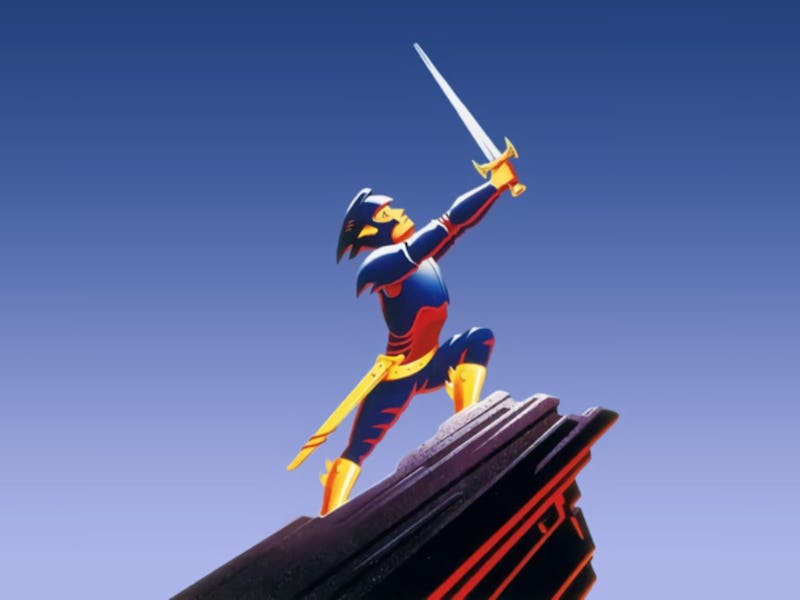30 Years Later, the Worst Final Fantasy Game Is a Baffling Relic of Another Age
An interesting look into Square Enix's past.

Since its first entry in 1987, Final Fantasy has been one of the most popular, beloved series in all of gaming. Telling tales of high adventure as heroes fight to overcome darkness, Final Fantasy games are known for their moving stories, memorable characters, and vast reinvention between titles.
Outside of the mainline series, Final Fantasy has also gotten a number of spinoffs that stretch the identity of the series even further. They explore different stories and use vastly different mechanics from major Final Fantasy releases. This month sees the anniversary of one of the best, most inventive among Final Fantasy spinoffs, Final Fantasy Tactics Advance.
But we’re here to talk about Final Fantasy Mystic Quest.
Final Fantasy Mystic Quest is a stripped down Final Fantasy that defies series tradition.
Released on September 10, 1993 in Japan, Final Fantasy Mystic Quest was explicitly made to appeal to U.S. audiences — so much so that it launched a year earlier in North America and was renamed Final Fantasy USA: Mystic Quest in Japan. Developer SquareSoft (pre-merger with Enix) billed it as a Final Fantasy for beginners, with simplified mechanics that make it more accessible to players who weren’t familiar with roleplaying games. The idea was that other Final Fantasy titles were just too complicated for American players more accustomed to John Madden Football and Double Dragon than anything to do with high fantasy and turn-based combat.
We may never know if that was actually what was keeping American players away from Final Fantasy, because as it turns out Final Fantasy Mystic Quest was just not very good.
Final Fantasy Mystic Quest made a lot of bold changes to the series formula. It did away with the expansive world map of previous games, opting for a smaller world with a few points of interest to travel between. There were no random battles, with enemies instead appearing as sprites that could be avoided if you just weren’t in the mood to fight giant frogs at the moment.
Combat was also simplified, with far fewer options for attacks and spells. Even the way you grew and acquired new abilities was vastly different. Spells were found in chests and new equipment was an automatic upgrade instead of an item to equip. All these changes took a lot of the choice and freedom out of Final Fantasy Mystic Quest, but it wasn’t all about what it stripped away.
Weapons could be used outside of combat in Final Fantasy Mystic Quest, mostly to cross gaps and destroy obstacles. It also featured more traditional puzzles than earlier Final Fantasy games had. By simplifying itemization and ability choices, it did let players focus more on combat and story progress — if only they were worth seeing in the first place.
Square’s bid to appeal to U.S. audiences didn’t pan out.
Final Fantasy as a series has always been about innovation. No two titles are exactly alike, and even though not every entry is beloved, there’s something to like in every one. Longtime fans can even see ideas evolve over the course of the series, like how Square Enix dived into MMORPGs with Final Fantasy 11, experimented with MMO-inspired single-player games in Final Fantasy 12 and 13, and finally launching a much more successful MMO with Final Fantasy 14.
The lessons of Final Fantasy Mystic Quest didn’t exactly carry over as cleanly, but even in 1992, Square was experimenting with more out-of-combat interactions, alternatives to random battles, and simplified equipment that were later done more successfully in Final Fantasy 16.
Final Fantasy Mystic Quest is not one of those flops that look good in retrospect. It doesn’t even have an effect on the modern series, outside of the most tenuous connections. But what it does is show that the spirit of Final Fantasy has always been about trying new things, and sometimes failing. As even Final Fantasy 16 producer Naoki Yoshida tells Inverse, “the series is currently struggling.”
As much as it’s a sign of the series’ heart, Final Fantasy Mystic Quest is also a time capsule. It comes from a time when Japanese and North American audiences were so separate that even a giant like Square had to fight for recognition abroad. It’s also a reminder of what’s happened to the industry as rising costs, consolidation, and pressure from executives demand more guaranteed successes and fewer experiments. Square Enix has posted major financial losses this year and pushed even harder into hopeful money-makers like its widely derided NFT game. We may not miss Final Fantasy Mystic Quest on its own merits, but it’s worth remembering as a relic of a much different period for Square — and the games industry as a whole.
This article was originally published on